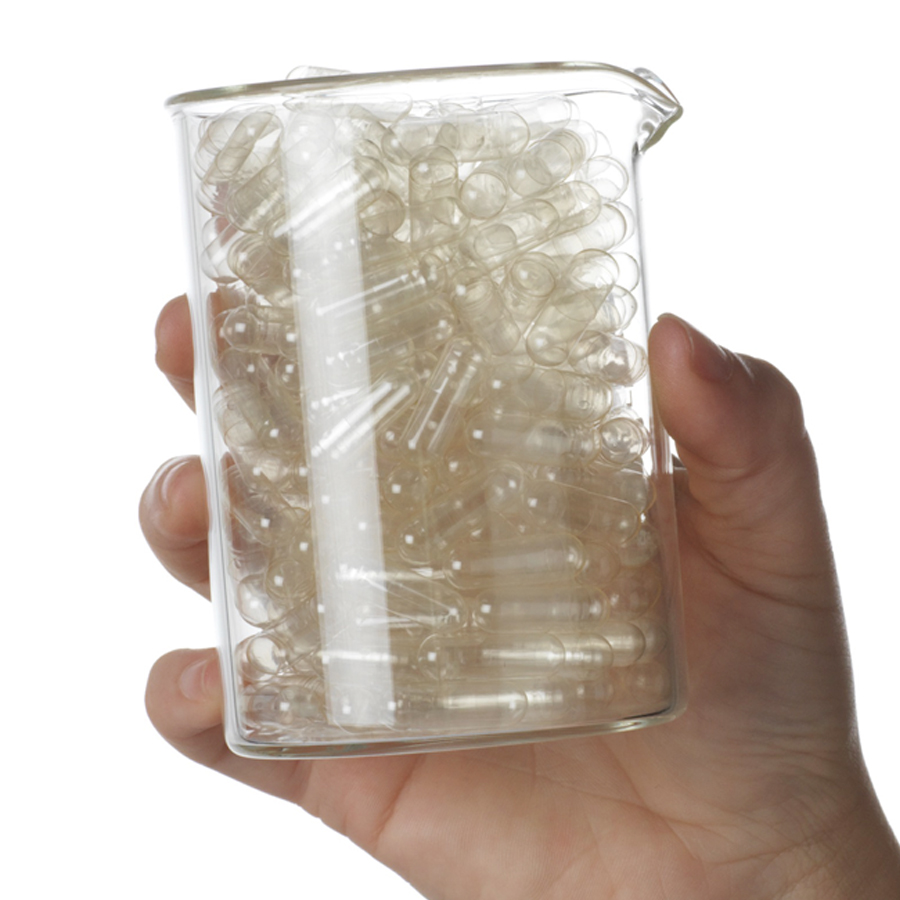

Hard gelatin capsules are manufactured by the dipping method which is dipping, rotation, drying, stripping, trimming, and joining. The process of encapsulation of hard gelatin capsules can be done on manual, semi-automatic, and automatic capsule filling machines. In the 21st century, gelatin capsules are more broadly used than vegetarian capsules because the cost of production is lower. The main ingredient of vegetarian capsules is hydroxypropyl methyl cellulose. Vegetable capsules, introduced in 1989, are made from cellulose, a structural component in plants.
SIZES GELATIN CAPSULES SKIN
Gelatin capsules, informally called gel caps or gelcaps, are composed of gelatin manufactured from the collagen of animal skin or bone. The powder or spheroids inside the capsule contains the active ingredients and any excipients, such as binders, disintegrants, fillers, glidant, and preservatives. However, the machinery required to manufacture them is more complex. With the compressed slug method, weight varies less between capsules. Before use, the two halves are separated, and the capsule is filled with powder or more normally pellets made by the process of extrusion and spheronization (either by placing a compressed slug of powder into one half of the capsule or by filling one half of the capsule with loose powder) and the other half of the capsule is pressed on.

The capsules are supplied as closed units to the pharmaceutical manufacturer. The capsules are made in two parts by dipping metal pins in the gelling agent solution. James Murdoch of London patented the two-piece telescoping gelatin capsule in 1847. Two-piece gel encapsulation ("hard capsules") įlight through the image stack of the above scan. In 1949, the Lederle Laboratories division of the American Cyanamid Company developed the "Accogel" process, allowing powders to be accurately filled into soft gelatin capsules. Softgels are also highly suited to potent drugs (for example, where the dose is <100 µg), where the highly reproducible filling process helps ensure each softgel has the same drug content, and because the operators are not exposed to any drug dust during the manufacturing process. Liquid ingredients are difficult to include in any other solid dosage form such as a tablet. This is because the fill can contain liquid ingredients that help increase the solubility or permeability of the drug across the membranes in the body. Softgels can be an effective delivery system for oral drugs, especially poorly soluble drugs. This method was high-yield, consistent, and reduced waste. His innovation used a rotary die to produce the capsules. All modern soft-gel encapsulation uses variations of a process developed by R. Although some companies still use this method, the equipment is no longer produced commercially. Later on, methods were developed that used sets of plates with pockets to form the capsules. They used individual iron molds for their process, filling the capsules individually with a medicine dropper. In 1833, Mothes and Dublanc were granted a patent for a method to produce a single-piece gelatin capsule that was sealed with a drop of gelatin solution. Single-piece gel encapsulation ("soft capsules") For this reason, producers of drugs such as OTC analgesics wanting to emphasize the strength of their product developed the “caplet”, a portmanteau of “capsule-shaped tablet”, in order to tie this positive association to more efficiently-produced tablet pills, as well as being an easier-to-swallow shape than the usual disk-shaped tablet medication. Since their inception, capsules have been viewed by consumers as the most efficient method of taking medication. Other ingredients can be added to the gelling agent solution including plasticizers such as glycerin or sorbitol to decrease the capsule's hardness, coloring agents, preservatives, disintegrants, lubricants and surface treatment. Soft-shelled capsules, primarily used for oils and for active ingredients that are dissolved or suspended in oil.īoth of these classes of capsules are made from aqueous solutions of gelling agents, such as animal protein (mainly gelatin) or plant polysaccharides or their derivatives (such as carrageenans and modified forms of starch and cellulose).These are made in two halves: a smaller-diameter “body” that is filled and then sealed using a larger-diameter “cap”.

processes of extrusion or spheronization.


 0 kommentar(er)
0 kommentar(er)
